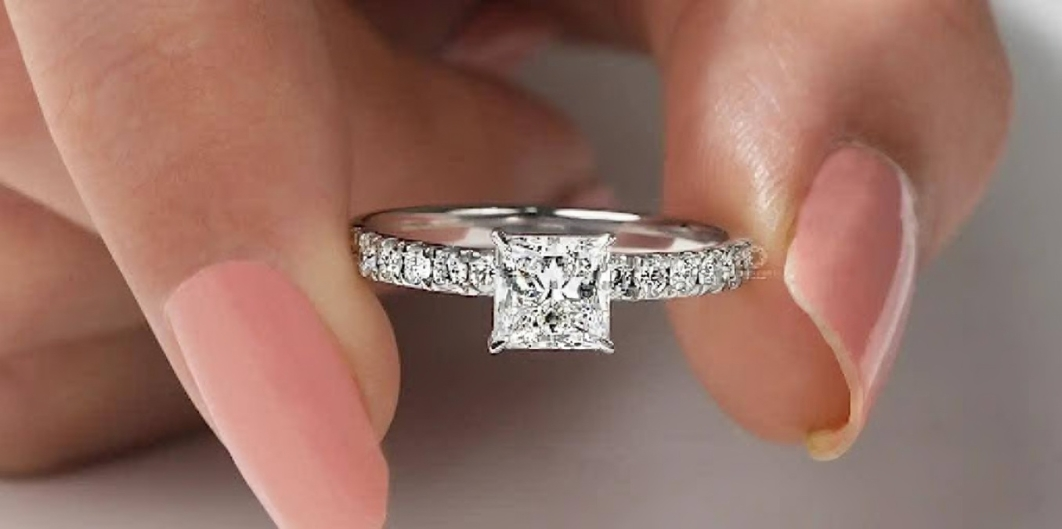In the 1700s, engagement rings UK began to reflect a burgeoning interest in both personal expression and the romantic ideals of the era. This period marked a significant shift in the choice of gemstones used in engagement rings, with couples increasingly selecting stones that not only showcased beauty but also conveyed deep meaning and symbolism. The evolution of gemstone preferences during this time laid the groundwork for modern engagement ring traditions.
One of the most popular gemstones of the 1700s was the diamond. Revered for its brilliance and clarity, diamonds became a favored choice among the aristocracy and wealthy classes. While diamonds had been used in jewelry for centuries, advancements in cutting techniques during this period allowed them to shine more brilliantly than ever before. This newfound sparkle contributed to the diamond’s status as a symbol of strength, endurance, and everlasting love. Couples began to see diamonds as the ultimate choice for engagement rings, and their popularity only grew as new sources were discovered.
Another significant gemstone during the 1700s was the sapphire. With its rich blue hue, sapphire became associated with loyalty, wisdom, and nobility. The gemstone’s connection to royalty made it a popular choice for engagement rings among the upper classes. Sapphires were often set in ornate designs, sometimes surrounded by diamonds, creating a striking contrast that enhanced the overall aesthetic of the ring. The enduring popularity of sapphires was also due to their availability in various colors, allowing couples to choose stones that resonated with their personal tastes.
Emeralds also captured the attention of couples during this time. Known for their vibrant green color, emeralds symbolized rebirth, fertility, and love. These gemstones were prized not only for their beauty but also for their rarity, making them a luxurious choice for engagement rings. The lush green of emeralds was often complemented by diamonds or set in intricately designed bands, reflecting the artistry of the period. Many couples opted for emeralds as a way to express their devotion, believing in the stone’s ability to bring harmony to relationships.
Rubies, with their deep red hue, were another popular choice in 1700s engagement rings. Rubies represented passion and desire, making them a fitting symbol for love. Their rarity and striking appearance made them a sought-after gemstone among couples who wished to make a bold statement with their engagement rings. Rubies were frequently set in elaborate designs, often alongside diamonds, creating a luxurious and eye-catching combination that captured the essence of romantic love.
In addition to these more traditional gemstones, the 1700s also saw the rising popularity of semi-precious stones. Amethyst, with its beautiful purple tones, became a favored choice for those seeking a more unique option. Amethyst was believed to promote calmness and balance, making it a suitable stone for engagement rings. Its affordability compared to diamonds and other precious stones made it accessible to a broader range of couples, allowing more people to embrace the tradition of engagement rings.
The use of pearls in engagement rings also gained traction during this period. Pearls symbolized purity and innocence, making them particularly appealing for engagement rings. While pearls were often seen in more delicate designs, their luster and understated beauty resonated with couples who valued elegance over extravagance. Many rings incorporated pearls alongside gemstones, creating unique combinations that reflected personal style and sentiment.
As trade routes expanded and exploration increased, jewelers gained access to a wider variety of gemstones from different regions. This broadened the selection available for engagement rings, allowing couples to choose stones based on personal significance or aesthetic preference. The artistry of the time also contributed to the popularity of various gemstones, as skilled craftsmen created intricate designs that showcased each stone’s unique beauty.
In conclusion, the 1700s were a transformative period for British engagement rings, characterized by a diverse array of popular gemstones. From the timeless allure of diamonds to the vibrant hues of sapphires, emeralds, rubies, and semi-precious stones, each choice reflected the values and sentiments of the era. The legacy of these gemstones continues to influence modern engagement ring designs, reminding us of the enduring significance of these cherished symbols of love and commitment. The choices made by couples in the 1700s have laid the foundation for the beautiful traditions we celebrate today.

